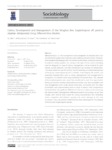Use este identificador para citar ou linkar para este item:
http://www.alice.cnptia.embrapa.br/alice/handle/doc/1060934| Título: | Colony Development and Management of the Stingless Bee Scaptotrigona aff. postica (Apidae: Meliponini) Using Different Hive Models. |
| Autoria: | LEÃO, K. L.  QUEIROZ, A. C. M. de   VEIGA, J. C.   CONTRERA, F. A. L.   VENTURIERI, G. C.   |
| Afiliação: | Kamila Leão Leão, GRADUANDA UFPA; ANA CAROLINA MARTINS DE QUEIROZ, CPATU; Jamille Costa Veiga, GRADUANDA UFPA; Felipe Andrés León Contrera, UFPA; GIORGIO CRISTINO VENTURIERI, CPATU. |
| Ano de publicação: | 2016 |
| Referência: | Sociobiology, v. 63, n. 4, p. 1038-1045, Dec. 2016. |
| Conteúdo: | Meliponiculture, i.e. indigenous beekeeping, is an old activity in the Americas and is widely distributed throughout Brazil. However, since stingless bee keeping is still not entirely standardized, studies are necessary to achieve a better practice. For example, the types of hives used in breeding must be designed to ease the colony management and be suitable for each species, once size, behavior, and nest architecture vary among the meliponines. This study aimed to propose and test a vertical hive for breeding Scaptotrigona aff. postica and evaluated characteristics such as colony development and management, comparing it with a horizontal, traditional, hive. Ten colonies of Scaptotrigona sp. were used, five transferred to each hive type tested. During six months, monthly observations of nest components, hive occupation and hive management were made. The brood disk area, contrasting with the other parameters, were about twice larger in the vertical hive. No significant difference in hive occupation was found among the tested models. Management differences were found among the two hive models, where the vertical hive is highlighted having characteristics that eased colony inspection and division, causing minor damage to the nest structures. Thus, this vertical model hive has some advantages for keeping this Scaptotrigona species. |
| Palavras-chave: | Meliponicultura Abelha sem ferrão |
| Digital Object Identifier: | http://dx.doi.org/10.13102/sociobiology.v63i4.1041 |
| Tipo do material: | Artigo de periódico |
| Acesso: | openAccess |
| Aparece nas coleções: | Artigo em periódico indexado (CPATU)  |
Arquivos associados a este item:
| Arquivo | Descrição | Tamanho | Formato | |
|---|---|---|---|---|
| 104167101PB.pdf | 882,17 kB | Adobe PDF |  Visualizar/Abrir |









